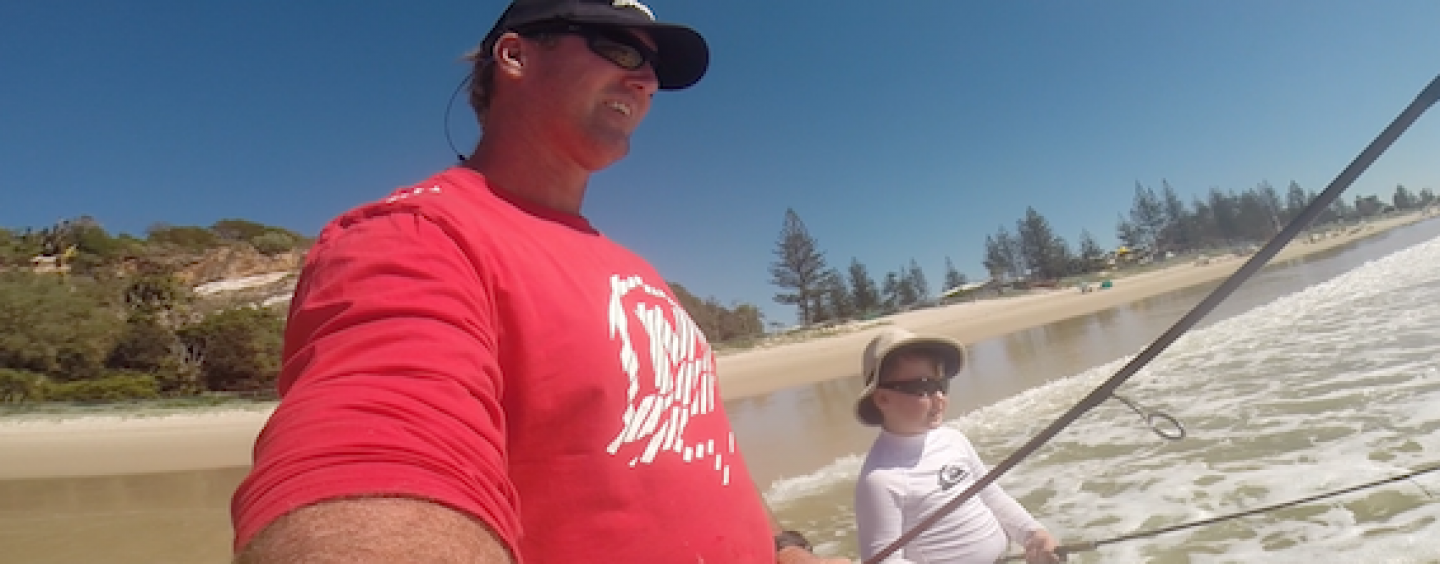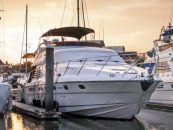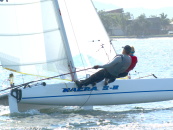When you think of islands in our local vicinity, ninety nine precent of us instantly think of North and South Stradbroke Islands; then Fraser Island, which is some three hundred kilometres away. But what about old Moreton Island? I guess most think of Moreton Bay as being on Brisbane’s back door and by right it certainly is. But what makes this island so incredible are its biodiversity and charm.
A vehicle ferry, the MiCat, leaves from Fisherman Island at the mouth of the Brisbane River to Moreton Island. The journey over takes just under two hours. Upon arrival on the island, you feel as though you have just landed on Fraser Island without the arduous drive. (The other ferry, the Combie Trader, which used to departed from Scarborough near Redcliffe, is no longer in operation.)
To me, Moreton Island is like North Straddie without bitumen. Sand tracks meander through the small townships and up the secluded campsites with million dollar bay and ocean views. The water clarity is incredible! Some would describe it as being gin clear. The marine life that flourishes in it is amazing. Freshwater lakes can also be found around the island with the Blue Lagoon being the favourite stop off point for many.
The northern tip of Moreton is commonly known as North Point. Here, campers can wake up to the smell of the salt air and the endless crash of near-on perfect waves rolling onto the beach. Fishing in this area is incredible with a variety of fish constantly schooling and moving through the waters. Erosion is a small problem when the northerly winds blow, but that makes for perfect grounds when the annual flathead run occurs in September. Certain times of the year, hundreds of flathead lie in among the logs waiting to ambush the small whiting and hardy head fish swimming past.
Further down the island, the surf beaches are littered with some of the best gutters I have ever seen, with kilometres of near-on perfect whiting grounds. Old battery arms sit on top of the sand dunes. If you are keen to take the ten kilometre return journey, you will get up close and personal with some of the old remnants from World War Two.
Further south, you reach an area known as the Mirapools, another perfect fishing spot. It is also an area where you can take your car if you are not up to speed with the tides.
Running the beach here can be dangerous particularly on the rising tide, but once through, a track winds its way from the eastern side of the beach to the west and past a small village called, Kooringal. This small fishing post sits on the most southwestern tip of the island and provides perfect shelter for boaties wanting to spend the weekend away on the bay. There is a down side to this part of the island though, and that is the midgies or sand flies. Mangrove trees line the bottom end of the island. As you head further up the western side, you pass monster sand hills that seamlessly climb up and up in the heavens. The climb is a killer, and I mean a killer! It is torturous, extremely steep, and in the middle of the day, temperatures on the sand double if not triple. Once at the top, you will see the views that are magnificent as they stretch across the bay to Brisbane, north to Bribie and south towards Straddie. The best part of being on top is the quick exit down, with the use of a piece of cardboard. On the way down, remember to quickly pull up; otherwise, you will eat sand or get hit by a 4WD passing by.
Further north, you will come across Shark Spit, an area known by many anglers as flathead central. Sandy flats with grass beds scattered along them give the effect of a patchwork quilt. Here, the flathead lie in numbers again waiting to ambush any small prey swimming past. This part of the island should only be visited during the bottom end of the tide; at high tide, there is no way out other than driving up into the trees and spending the night there till the tide drops away.
Tangalooma Island Resort, on the western side of Moreton Island, was originally a whaling station and operated for ten years from 1952 to 1962, which in that time over 6,200 humpback whales were harvested in the processing factory. Monster white pointer sharks and other toothy critters made this area their home. If instinct has it, it is no wonder why so many large sharks are still hooked in the bay. Nowadays, Tangalooma is a thriving resort for the tourism industry with dolphin feeding and daily sight seeing tours taking place. A series of wrecks are situated just to the north of the resort providing anglers, boaties and tourists a perfect sheltered area for a swim or to just laze about in the sand or sun.
Cowan Cowan is another small community situated just north of the resort. Here, it is a who’s who of who place. It seems to be that anybody who is somebody has a place here with its own helicopter pad and designated beach airstrip.
There are only a couple of tracks across the island. One is from Ben-Ewa and the other is from Bulwer. Here, expect the trek across to take approximately half and hour. Yes, the sand is soft and yes it does get bumpy. The island is four-wheel drive country only.
Campsites must be booked through the National Parks office via phone or their website prior to arriving on the island. Most camping grounds have amenities, water and of course the beautiful views to go with it.
Moreton Island is a place to definitely visit. Why wouldn’t you, when the departure point to the island is only an hour away from the Gold Coast and Sunshine Coast?
By Paul Burt



























